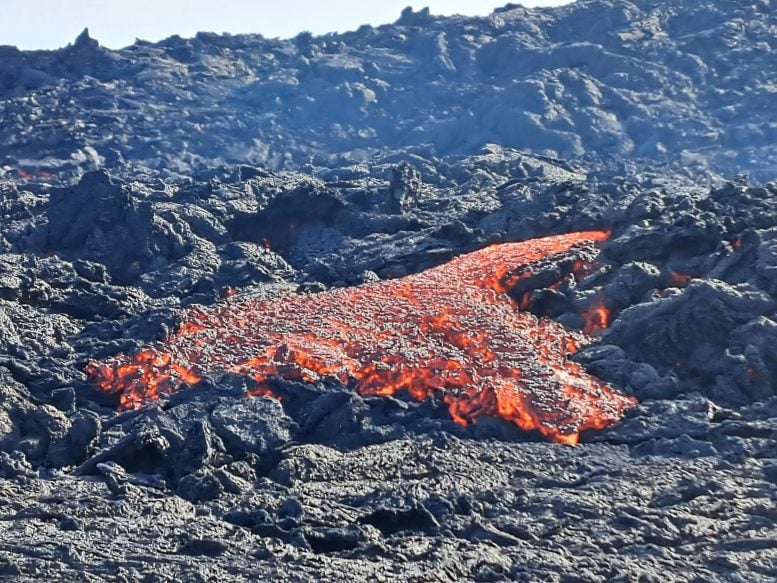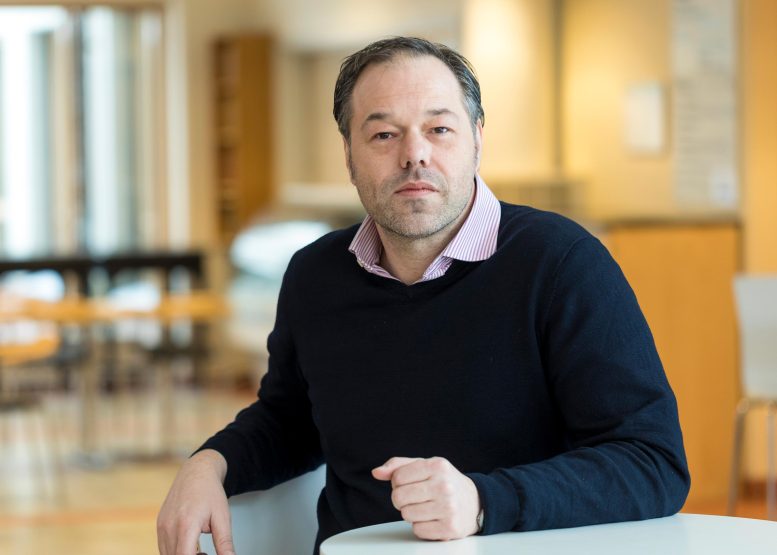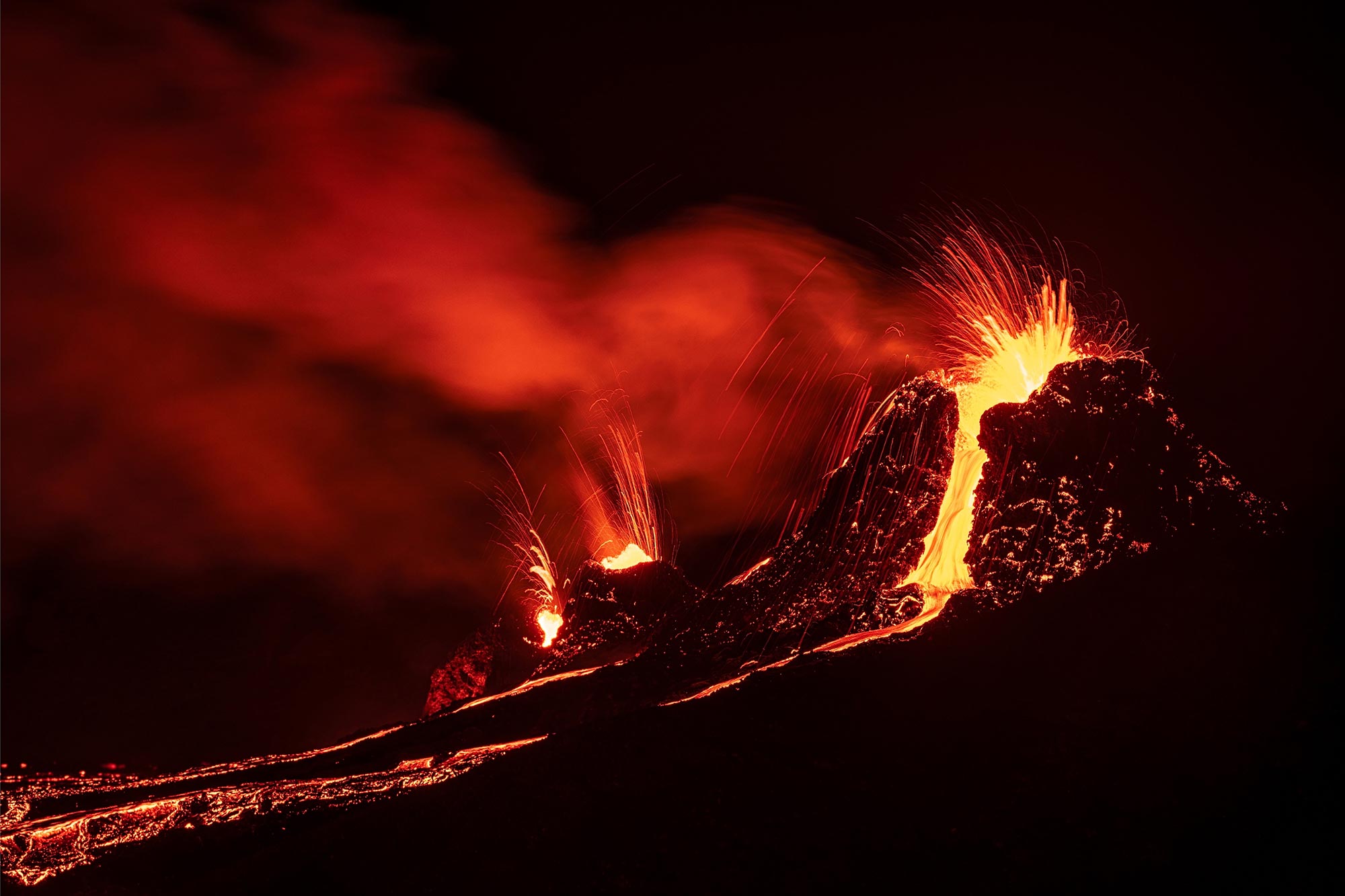Iceland’s most recent volcanic episode on the Reykjanes peninsula, set to last centuries, began with vast magma pooling just beneath the surface. This is the finding of a new study published in the journal Nature conducted by an international team of researchers from the United States, Sweden, and Iceland.
New findings suggest that the 2021 eruption on Iceland’s Reykjanes Peninsula involved magma formed from the crust rather than directly from the mantle, overturning previous assumptions. Geochemical analyses indicate a crustal source for the lava, with similar magma behaviors observed in other recent global eruptions.
Initially, the recent lavas on the Reykjanes Peninsula were thought to have erupted directly from the mantle, but geochemical evidence shows that the magma comes from underground melting of the Earth’s crust as a result of the ‘Fagradalsfjall fires’ that started in 2021. This was discovered by researchers in an international team from the University of California, San Diego’s Scripps Institution of Oceanography, the Department of Earth Sciences at Uppsala University, and the University of Iceland in Reykjavik.

Lava breakout from thick lava pile near Sundhnúkur vent in April 2024. Credit: Valentin Troll
Geochemical Analysis of Erupted Lavas
Sampling of the erupted lavas at regular intervals enabled a detailed time-series analysis of geochemical signals. These show that the start of the eruption was fed by magma that was residing in the crust for some time, contrasting the initial hypothesis for magma ascent directly from the mantle. The results were published by the international research team on July 31st in the journal Nature.
The research team has been studying basaltic lavas from other recent volcanic eruptions in addition to Iceland. These include the 2021 eruption of the Tajogaite volcano on the island of La Palma in the Canary Islands and the 2022 eruption of Mauna Loa, in Hawaii. They have found similar magma pooling beneath La Palma.
“Systematic lava sampling and subsequent analysis of compositional changes in the laboratory, help to decipher what is feeding the volcano at depth,” said first author James Day, professor of Geosciences at Scripps Institute of Oceanography. “It’s a bit like taking regular measurements of someone’s blood. In this case, the volcano’s ‘blood’ are the molten lavas that emanate so spectacularly from it,” he adds.

Valentin Troll, Professor of Petrology at Uppsala University. Credit: Mikael Wallerstedt
Insights From Isotopic Compositions
Specifically, previous studies had suggested that the Fagradalsfjall Fires erupted from the surface without interaction with the crust. The team, used the isotopic composition of the element osmium to understand what was happening beneath the volcano. The Earth can be broken up into a series of layers. The deepest portion is the metallic core. The shallowest layers are the atmosphere, ocean, and the rocky crust.
All human beings live on the crust, which is dominated by rock types such as granite or basalt like that found in Iceland’s lavas. In between the core and crust is the vast mantle of Earth. This mantle layer is where melting occurs to produce the magmas feeding volcanoes like those in Iceland. Osmium is a highly valuable metal, much like platinum or palladium. What’s remarkable about osmium is that one of its isotopes is produced by the radiogenic decay of another valuable metal, rhenium. Because the elements behave differently during melting, one of the elements, rhenium, is enriched in Earth’s crust, whereas the other is not.
The team was able to show that the 2021 lavas were contaminated by crust, whereas the 2022 lavas were not. They conclude that the earliest lavas must have pooled in the crust prior to eruption, whereas later eruptions used pre-existing pathways to get to the surface.
Continuation and Impact of Eruptions
“It seems that the ‘fires’ in Iceland will last for some time longer, possibly years,” said Valentin Troll, professor at the Department of Earth Sciences at Uppsala University and co-author of the study, and lead author on a recent study in Terra Nova, which investigated the magma plumbing system in the Reykjanes volcanic area.
The eruptions on the Reykjanes peninsula are now likely to continue, and while this is devastating for the people of the evacuated town of Grindavik, the events will provide a treasure trove of important scientific information on how lava fields build up and how magma is migrating from the Earth’s interior to the surface.
For more on this research, see Iceland’s Fagradalsfjall Fires: Geochemical Analysis Reveals Hidden Magma Pools.
Reference: “Deep crustal assimilation during the 2021 Fagradalsfjall Fires, Iceland” by James M. D. Day, Savannah Kelly, Valentin R. Troll, William M. Moreland, Geoffrey W. Cook and Thor Thordarson, 31 July 2024, Nature.
DOI: 10.1038/s41586-024-07750-0





















Discussion about this post